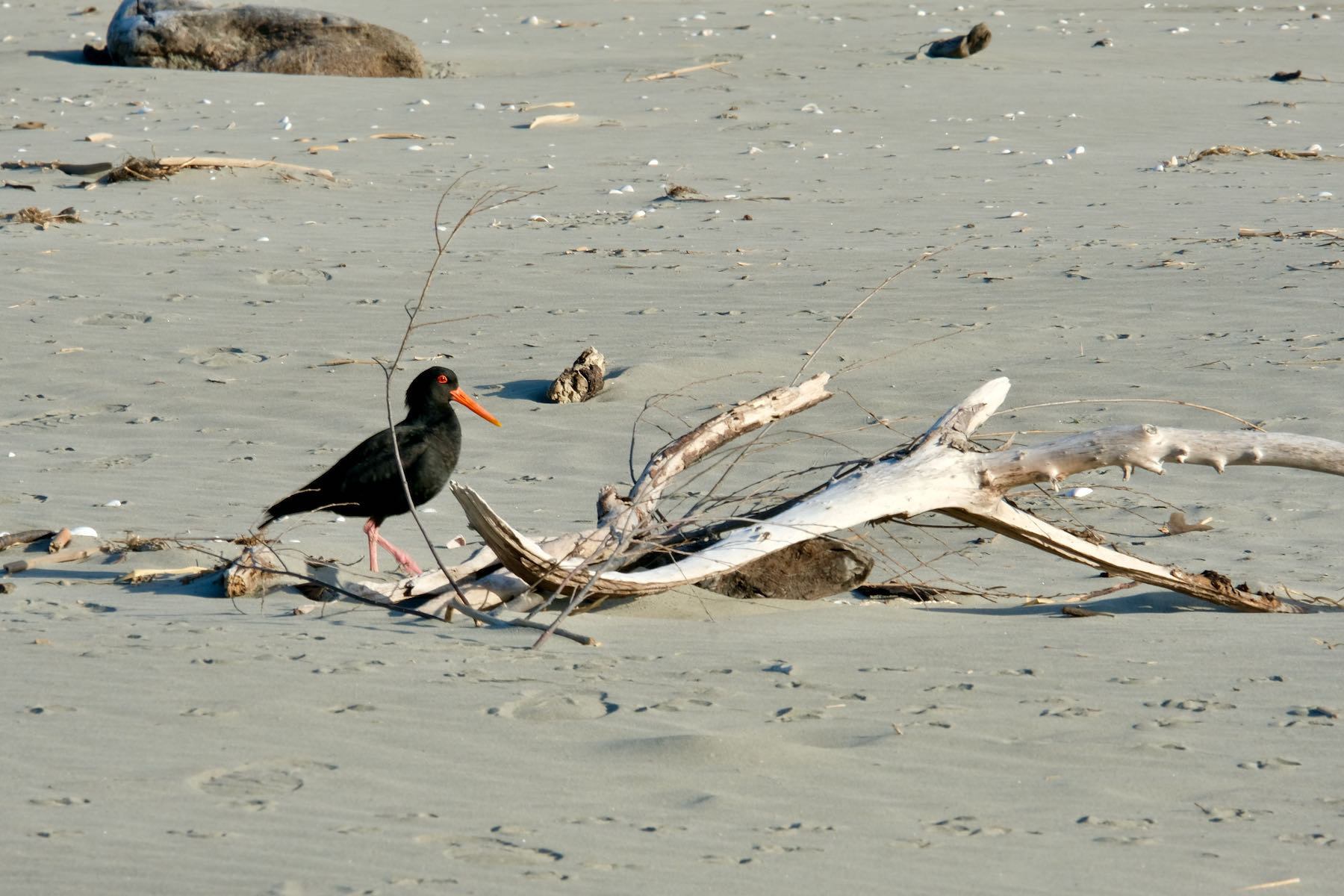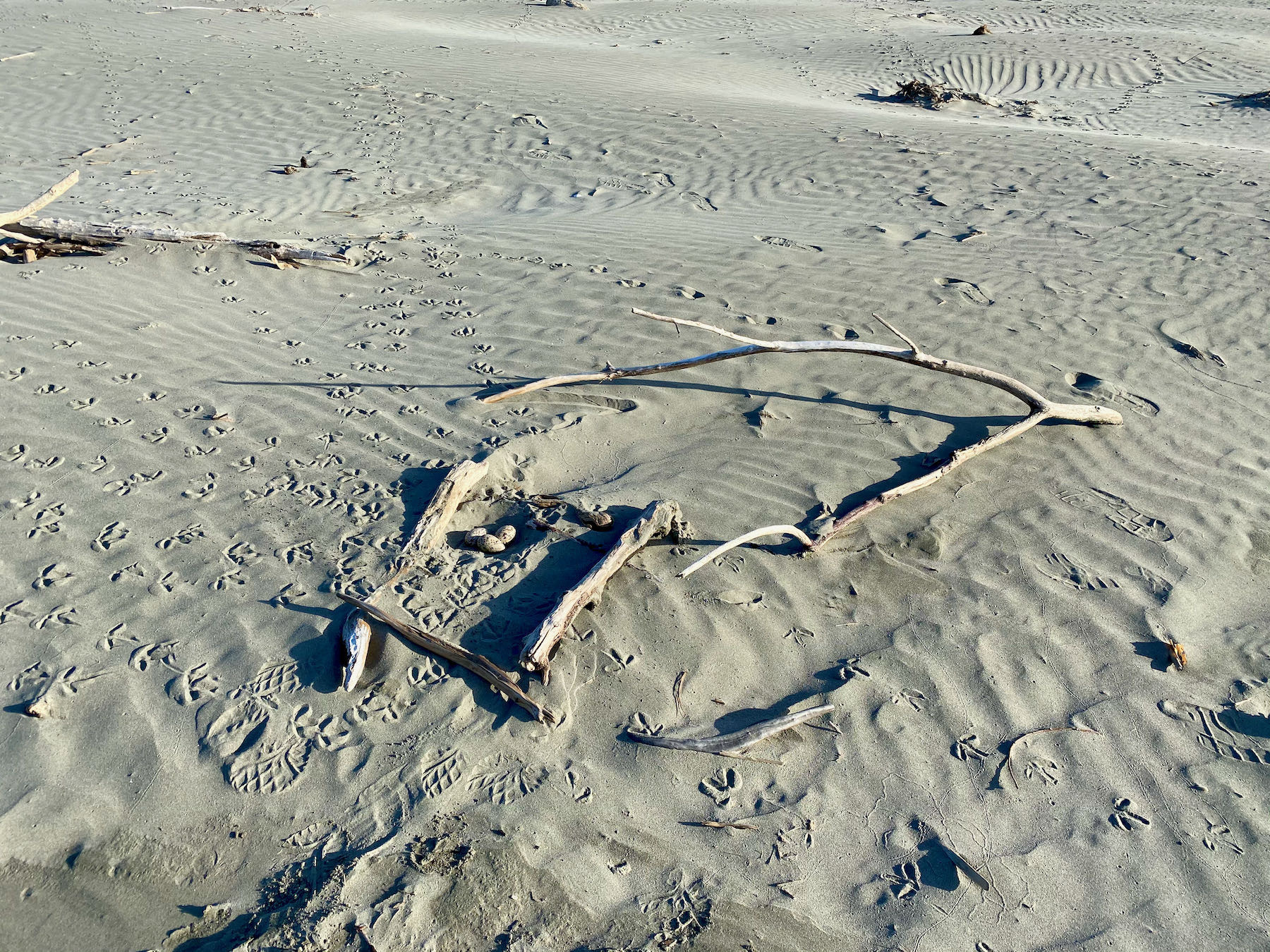Here’s the longer story about that Oystercatcher egg.
The dogs and I were walking from the beach track to the river when I almost stepped on an odd-looking ‘stone’ lying alone in the sand. I picked it up — it was quite heavy — thinking the coloration was more like a bird’s egg. Then I realised it was in fact a bird egg.
Given the size I thought perhaps it was from a black-backed gull, a large bird. It was cold so I puzzled how it came to be lying by itself on the sand, and I put it in my pocket to take home.

We walked on, and soon passed the oystercatchers who did their usual squawking and distracting.
I’d read:
Nests are normally simple scrapes in the sand, often with a marker of driftwood, vegetation, or flotsam. The 2-3 eggs are usually laid from October onwards (rarely September), and replaced if lost. Incubation is shared and takes about 28 days. Chicks fly at 6-7 weeks-old, and late chicks may not fledge until March.
I’ve never been able to actually spot their nest, but the birds are in that place every year. We have a couple of pairs actually, not too far from one another.

At the river I chatted with a friend, showing him the egg. He identified it as an Oystercatcher egg and we talked about where I’d found it.
I followed my footprints back and put the egg where I thought I’d picked it up. A few moments later I spotted their nest and moved the egg over there.

My friend and I added a few sticks around the nest to provide an iota of extra protection. Our beach is well used by walkers with and without dogs, horse riders and people in all manner of vehicles — cars, tractors, quad bikes, trail bikes. Many hoon around at speed and with no regard for wildlife or the beach environment.

We’ve had quite a spell of rough weather lately, with high tides and big swells, along with wind and rain. I suspect the stray egg was dislodged from the nest, perhaps by the tide, which is why I could pick it up with no protest from the parent birds.
Variable oystercatchers breed in monogamous pairs, and defend territories vigorously against neighbours. Nests are normally simple scrapes in the sand, often with a marker of driftwood, vegetation, or flotsam. The 2-3 eggs are usually laid from October onwards (rarely September), and replaced if lost. Incubation is shared and takes about 28 days. Chicks fly at 6-7 weeks-old, and late chicks may not fledge until March. Chicks are vigorously defended by both parents, often well after fledging.
I hope that egg and the two siblings survive. We’re entering the height of people-at-the-beach season. The Christmas summer holidays start in a week or so, and the beach will be a chaos of activity for two or three weeks.
Breeding success of variable oystercatchers is often low, with main causes of failure being predation of eggs or chicks by a range of mammalian and avian predators, flooding of nests by big tides, and disturbance resulting from human recreational use of the coast.